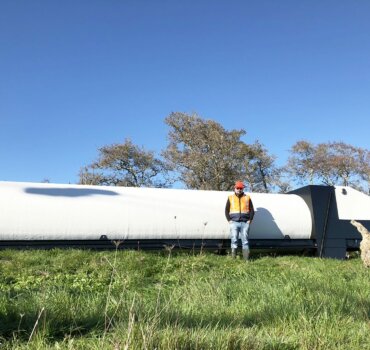
Project Manager Richard Dodera pictured with one of the new screw pumps on site at Mangawhero before it was installed.

Project Manager Richard Dodera pictured with one of the new screw pumps on site at Mangawhero before it was installed.
Waikato Regional Council is keeping its fingers crossed as it continues flood protection maintenance work throughout the region during Covid restrictions.
Integrated Catchment Management Director Greg Ryan says flood protection work continues to achieve its goals and that was highlighted recently when water dispersed quickly after some extremely heavy rain.
His task is to have the right people in the right place carrying out ongoing maintenance in the wake of a wet season and the next few weeks are key to getting some of that work completed. Level 2 is manageable, but he would not be so comfortable if Waikato moved back to Level 3.
Council chairman Russ Rimmington is keeping a watch on the work – he could be concerned if the Covid restriction caused any ongoing delays.
Under the Shovel Ready projects heading the Regional Council has secured about $29 million in funding for environmental restoration, biosecurity and climate resilience towards projects totalling about $48 million across the Waikato region.
That included $16 million from the Government’s Covid-19 recovery fund for flood protection infrastructure projects totalling $24.85 million.
Flood protection work helps ensure food-producing land is not lost in times of heavy water flow.
Greg Ryan said the Waikato system was as good as any. The protection schemes safeguard about 3000 square kilometres of high value food-producing land, and services and infrastructure such as water supply, power, telecommunications, and road and rail networks
Among projects on the drawing board are the installation of five water pumps – the design of which is thought to date back to ancient Egypt.
Archimedes’ screw – named after the Greek philosopher – transfers water while protecting fish life.
The $7m project, expected to take about three and a half years to complete will provide protection for 30 years and involve pump upgrades – four in Lower Waikato and one in Hauraki.
The enclosed Archimedes screw pumps enable safe passage for native fish, particularly large tuna (eels). Tuna live in streams and drains for many decades but breed once in their lifetime at sea.
Many existing assets were installed in the 1960s and 70s when native species were given little consideration.








